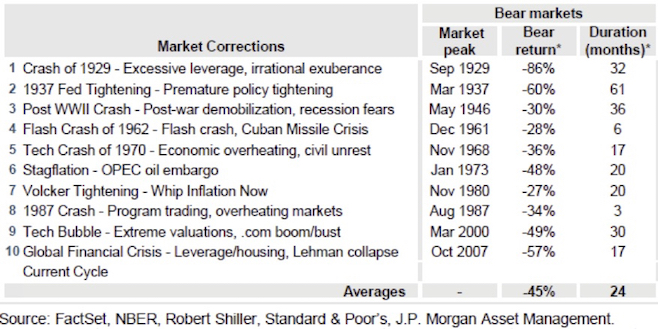2017 ended up as another strong year in the decade long bull market. Almost all major asset classes produced excellent returns particularly the equity markets with the S&P 500 reaching a new all-time high. After so many years of strong performance and low volatility the challenge for many investors might be to stay awake at the helm as the natural tendency might be to expect a continuation of the current trends. It is essential to remember that major changes in market trends and crises often happen when they are least expected. In the financial landscape there is such a thing as a thunder from the blue sky.
We should however emphasize again that we do not have any crystal ball to predict the future and that we do not know what will happen in 2018. A continuation of the current trend is certainly possible and even likely considering the fact that a dramatic worsening of economic and financial conditions does not appear imminent. However the key issue is to manage the risk responsibly in order to be ready also for the less likely but potentially devastating consequences of adverse market developments.
While markets are impacted by macroeconomic factors such as recessions, economic growth and interest rates one of the key parameters is valuation levels. At some point in time assets reach excessive valuations. When this point is reached becomes clear only in retrospect as overvaluation and undervaluation is often in the beholder’s eye and there is no infallible indicator to objectively define them. The best one can do is to try to get a sense of whether assets are closer to being undervalued or overvalued. After ten years of increases in asset prices the answer to that is clear. Currently almost every asset class is trading at all-time highs by any metric (s. graph below).


The question is not whether markets have reached their top or not which no one knows. The right question is about the risks and the opportunities markets currently offer. As we mentioned in our September letter the elevated current valuations mean that equity markets will likely deliver considerably less than the long-term averages of 8-10% in the coming years – a 4-6% annual return for the next five years looks like a realistic possibility. On the risk side it is in or view illusory to try to put a number on the probability of major correction but historically equity markets have regularly experienced bear markers with drops of 30-60% (s. table below). A traditional portfolio with a 70% equity allocation can in such circumstances easily experience a 30% drop which is unacceptable to many investors.


The current combination of limited upside and increasing downside risk calls for prudence and for overweighing lower risk-assets and those with limited correlation to equity markets. This is not an easy task considering that bonds offer little yield and considerable duration risk. The only solution in our view is to look for less conventional investments that still offer an attractive value proposition. Even dynamic investors willing and able to stomach mark-to-market losses based on the conviction that such losses would be “paper losses” that would be quickly recouped have to be cautious. If they are willing to take the risk of paper losses they should focus on those rare niche opportunities that currently entail high single digits or low double digits return potential –more than for equities and sometimes with less risk.
Finally, an important point to keep in mind is that while history is an important teacher it does not necessarily repeat itself. Assumptions based on past experience can be misleading. A widely held view is that “in the long term stocks always go up”. While this has generally proven true there were exceptions. For the fourteen years period between 1968 and 1982 the real return for the S&P 500 (including dividends) was slightly negative (the real return for bonds was even worse due to inflation). The Nikkei index of Japanese stocks is today still almost 50% down from its peak level three decades ago. This shows the need to avoid relying blindly on historic assumptions as well as the need for diversification across asset classes and geographies.
We thank you for your trust in 2017 and while positioning our portfolios cautiously for any circumstances we do hope that 2018 will be another smooth and profitable financial year.